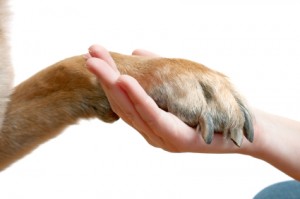
Your dog’s feet were made for taking punishment. Running, jumping, swimming, sliding, digging – it all takes its toll on your dog’s feet and pads. Most of the time they’re up to the task. After all, dogs probably know when to call it quits to avoid getting hurt. The problem arises when we, as pet owners, try to push our dogs further than their poor, tired feet can take them.
In their quest to please us, our dogs can sometimes do harm to their pads, necessitating costly trips to the vet for treatment. Be alert to the warning signs that your dog’s feet have had all they can take. Look out for:
- A dog who won’t walk or is reluctant to do so.
- A dog who spends a lot of time licking or nursing their feet.
- Discolored pads on your dog’s feet. Look for redness and swelling, or possibly even blisters.
- Foreign material in or around your dog’s pads. A small rock or shard of glass or splinter may be the culprit.
Dog’s feet can be a very sensitive area, so if it’s more than just a superficial wound, it may be time to visit the vet. Burns and blisters are especially troublesome and are worthy of a trip to the vet.
Watch out for those hot sidewalks and asphalt in the summertime and avoid the ice melt and other salt-based de-icers in the winter. Salt on your dog’s feet can quickly lead to dryness and cracks.
With a little foresight, both you and your dog can avoid the pitfalls of traversing the hot, rough terrain of summertime and the cracked, icy dangers presented by winter resulting in happy feet for all!
